The California Building Industry Association (CBIA) has released its 2025 Housing Killers and Creators list—highlighting key legislation that could significantly impact the state’s housing crisis.
Bills on the Housing Killers list would worsen the crisis by driving up costs, adding delays, and creating new obstacles to homebuilding. In contrast, bills on the Housing Creators list aim to remove barriers to construction and support the development of much-needed housing across California.
This annual list is designed to spotlight which proposals should be challenged, improved, or championed in the effort to solve California’s housing crisis.

Substantially broadens the California Environmental Quality Act (CEQA) consultation process with California Native American tribes. However, it does so in a way that could create an indefinite CEQA review cycle, leaving projects without certainty—even after environmental documents are certified and all necessary permits have been approved. Moreover, AB 52 could require projects to be permanently halted even after construction has begun. This approach overlooks the comprehensive tribal consultation process already built into the early stages of project planning, which is specifically designed to surface and address these critical issues upfront—helping to prevent delays and ensure timely delivery of much-needed housing for California families.
Poses a significant barrier to the development of new rental housing by making California’s existing rent control laws even more restrictive. AB 1157, among other provisions, extends rent control to single-family homes and condominiums owned by individuals and families—many of whom are already struggling with rising costs for maintenance, insurance, and utilities. In a market already challenged by high interest rates, tariffs, and soaring construction costs, this bill further discourages both private and institutional investment, ultimately leading to fewer homes being built for California’s families.
Exacerbates California’s housing crisis by imposing burdensome new water quality regulations on housing projects and introducing a broad private right of action that would allow anyone to sue homebuilders—potentially recovering attorney’s fees and triggering significantly higher penalties. While proponents argue that SB 601 is needed in response to a U.S. Supreme Court decision limiting federal regulations, the bill as written goes far beyond what federal law previously required. Moreover, SB 601 eliminates a critical safeguard that requires regional water boards and the State Water Resources Control Board to consider economic impacts, housing needs, recycled water use, and feasibility when issuing discharge requirements or permits. This safeguard was originally enacted to ensure housing considerations were integrated into water regulation decisions.
SB 682 (Allen) | Environmental health: product safety: perfluoroalkyl and polyfluoroalkyl substances
Grants the Department of Toxic Substances Control unchecked authority to determine which building products can be used in housing construction, imposing sweeping and arbitrary restrictions that would severely disrupt homebuilding across California. By banning essential materials – from heat pumps to electrical cabling – SB 682 drives up housing costs, jeopardizes safety, and further exacerbates the state’s housing crisis.

Increases stability of the insurance market and helps address the housing crisis by authorizing the California Infrastructure and Economic Development Bank (IBank), upon the request of the California Fair Access to Insurance Requirements Plan (FAIR Plan), to issue bonds, increase liquidity and claims-paying capacity of the FAIR Plan, and repay bonds issued for that purpose.
Establishes minimum uniform, consistent, transparent, fair, and effective standards for holding public agencies accountable when a court finds they have violated housing reform laws. Specifically, AB 712 ensures that if a housing development applicant sues a public agency to enforce these laws and wins the case, they are entitled to recover reasonable attorney’s fees and legal costs.
Eliminates unnecessary costs and delays to housing production by prohibiting local governments from requiring duplicative bonding or other financial assurances related to subdivision improvements that will be privately owned and maintained.
Expedites the approval of housing by shortening the time frame for state and regional agencies to approve or disapprove applications for housing development projects for which they are a responsible agency, but not the lead agency.
Provides greater certainty for housing developers by ensuring that the regulations and requirements set by state and regional agencies are fixed at the time a project application is submitted. It also requires these agencies to apply a “reasonable person” standard when determining whether a proposed housing project aligns with relevant regulatory plans.
Plugs gaps in the permitting process by requiring state and regional agencies to post their application requirements online, and by ensuring that all decisions are either covered by the “shot clocks” included in the Permit Streamlining Act or post-entitlement permit statutes.
- Will the bill constrain or increase housing production and supply?
- Will it increase or decrease the cost to build houses?
- Will it make housing even more expensive or less expensive for Californians?
- Will it make any of the processes associated with homebuilding such as the entitlement, approval, or permitting processes more complicated, difficult, and lengthy or less complicated, difficult, or lengthy?
- Does it discourage or encourage homeownership?
- Does it increase or decrease regulatory barriers?
- Will it encourage or discourage unnecessary lawsuits aimed at new home construction?
- Does the bill balance the housing crisis unfairly on the backs of a few versus a more egalitarian distribution or equally serve all Californians buying their first home?
Homeownership is a cornerstone of stable communities—contributing to better educational outcomes, increased employment opportunities, and improved physical and mental health. Access to housing that is affordable to all income levels can significantly reduce stress, limit exposure to environmental hazards, and curb the spread of infectious diseases.
Beyond personal well-being, owning a home is one of the most effective ways for Americans to build wealth and create generational stability. Yet, California’s homeownership rate has fallen to its lowest level since the 1940s, deepening existing disparities and limiting access to opportunity.
To address this growing crisis, we must boost housing production across all types and price points. Expanding access to homeownership is critical to advancing equity, supporting the health and prosperity of Californians, and driving the state’s economic recovery.
California’s homebuilding industry is stepping up—partnering with local governments and communities to increase supply in high-demand areas. Together, we’re working to develop diverse, inclusive housing options that meet the needs of all income levels—turning the vision of Housing for All into a reality.

#HOUSINGFORALL Based on feedback from our builders around the state, in January 2020 we compiled a series of legislative proposals aimed at relieving the state’s ever-growing housing policy crisis. Read more here.
